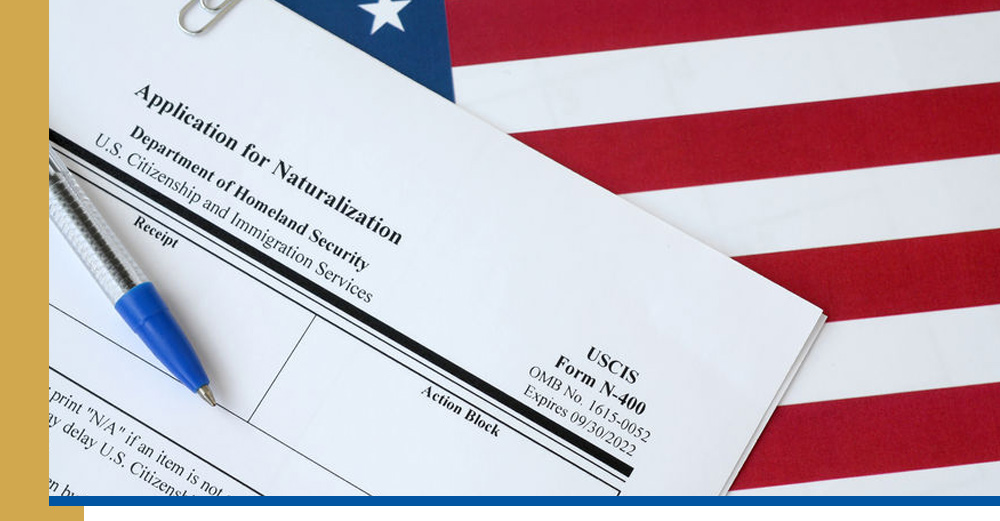Learn how you can get a Green Card through family, employment, asylum, and more. Explore all paths to U.S. permanent residency in this detailed guide by Barba Inegol Law Firm.
Obtaining a Green Card—officially known as a Permanent Resident Card—is a significant milestone for many immigrants seeking lawful permanent residency in the United States. It opens doors to employment, education, and the right to live permanently in the U.S., along with a pathway to citizenship. But the process can be complex and varies depending on your circumstances. This comprehensive blog will explore how you can get a Green Card, detailing the various eligibility categories, application processes, and what to expect along the way.
H2: How Can You Get a Green Card Through Your Family?
Family-based immigration is one of the most common paths to obtaining a Green Card. U.S. citizens and lawful permanent residents can sponsor certain family members to become permanent residents.
H3: Immediate Relatives of U.S. Citizens
If you are an immediate relative—such as a spouse, unmarried child under 21, or parent—of a U.S. citizen, you qualify for a Green Card without waiting for a visa number. This category is not subject to annual limits, making it one of the fastest ways to immigrate.
H3: Family Preference Categories
Other family members, such as adult children or siblings, fall into family preference categories that are subject to numerical limits and longer wait times. The categories are prioritized, and the wait can vary from a few years to over a decade, depending on your relationship and country of origin.
H2: How Can You Get a Green Card Through Employment?
Employment-based Green Cards are available to foreign nationals who bring valuable skills to the U.S. workforce. These are divided into five preference categories based on occupation, skill level, and labor demand:
H3: EB-1: Priority Workers
This category is reserved for individuals with extraordinary abilities in sciences, arts, education, business, or athletics, outstanding professors or researchers, and multinational executives. EB-1 applicants often have shorter wait times and may not need labor certification.
H3: EB-2 and EB-3: Professionals and Skilled Workers
EB-2 includes professionals with advanced degrees or exceptional ability, while EB-3 covers skilled workers, professionals, and other workers. Most applicants in these categories require an approved labor certification from the Department of Labor and a permanent job offer.
H3: EB-4 and EB-5: Special Immigrants and Investors
EB-4 is for special immigrants, including religious workers, certain employees of U.S. foreign services, and other unique groups. EB-5 allows investors who contribute significant capital to a U.S. business and create jobs for U.S. workers to apply for a Green Card.
H2: How Can You Get a Green Card As a Refugee or Asylee?
Individuals granted refugee or asylum status in the United States may be eligible to apply for a Green Card after meeting specific residency requirements.
H3: Refugees
Refugees are required to apply for a Green Card one year after entering the U.S. as a refugee. Their spouses and children are also eligible.
H3: Asylees
Asylees must have been physically present in the U.S. for at least one year after being granted asylum. They are not required to apply, but it is strongly recommended to secure their immigration status.
H2: How Can You Get a Green Card Through the Diversity Visa Lottery?
The Diversity Immigrant Visa Program, also known as the Green Card Lottery, provides another route for obtaining permanent residence, especially for individuals from countries with historically low rates of immigration to the U.S.
H3: Eligibility Requirements
Applicants must meet specific education or work experience requirements and be from a qualifying country. Entry into the lottery is free, but selection does not guarantee a Green Card—you must still pass all background checks and interviews.
H3: Annual Lottery Process
Every year, the U.S. government makes 55,000 Green Cards available through this program. Winners are selected randomly and must act quickly to submit additional documentation and complete the process before the fiscal year ends.
H2: How Can You Get a Green Card as a Victim of Crime or Abuse?
U.S. immigration law offers protections and immigration relief for individuals who are victims of crimes or abuse.
H3: VAWA (Violence Against Women Act)
Victims of domestic violence, battery, or extreme cruelty by a U.S. citizen or lawful permanent resident spouse, parent, or child may self-petition for a Green Card under VAWA, allowing them to escape abusive situations without their abuser’s knowledge or consent.
H3: U Visa and T Visa Holders
U Visas are available to victims of certain crimes who assist law enforcement, while T Visas are for victims of human trafficking. Both visa types may eventually lead to a Green Card after three years of continuous presence in the U.S.

H2: How Can You Get a Green Card While Inside the U.S.?
If you’re already in the United States, you can adjust your status to that of a lawful permanent resident without leaving the country.
H3: Adjustment of Status
Adjustment of Status (AOS) is the process of applying for a Green Card while inside the U.S. You must be eligible under one of the immigrant categories (e.g., family, employment, asylum) and must file Form I-485.
H3: Maintaining Legal Status
To successfully adjust status, you typically must have entered the country legally and maintained continuous lawful presence. Overstaying a visa or unlawful entry can complicate or disqualify you from this process.
H2: How Can You Get a Green Card From Outside the U.S.?
If you’re living abroad, the pathway to permanent residency is through consular processing.
H3: Consular Processing Overview
In this process, after USCIS approves your petition, your case is forwarded to the National Visa Center and then to a U.S. Embassy or Consulate in your home country. You will attend an immigrant visa interview, and if approved, receive a visa to enter the U.S. as a permanent resident.
H3: Entering the U.S. As a Resident
Once you arrive in the U.S., your Green Card is mailed to your U.S. address. It serves as your proof of lawful permanent residency and allows you to live and work freely.
H2: How Can You Get a Green Card if You’re in Removal Proceedings?
Being in removal or deportation proceedings doesn’t automatically disqualify you from getting a Green Card, but it adds complexity.
H3: Cancellation of Removal
Certain individuals may apply for cancellation of removal if they’ve been in the U.S. for a specific period, demonstrate good moral character, and can prove that removal would result in exceptional hardship to a U.S. citizen or permanent resident family member.
H3: Asylum or Adjustment of Status
You may also apply for asylum or request adjustment of status based on an approved petition during removal proceedings. These cases are handled in immigration court and require legal representation for the best outcomes.
H2: How Can You Get a Green Card if You’re Undocumented?
While challenging, undocumented immigrants may still have opportunities to obtain a Green Card depending on their circumstances.
H3: Special Provisions, Like DACA or TPS
Programs like Deferred Action for Childhood Arrivals (DACA) and Temporary Protected Status (TPS) offer temporary relief but do not directly lead to Green Cards. However, changes in immigration law or marriage to a U.S. citizen may create new pathways.
H3: Waivers and Provisional Unlawful Presence Waivers
Some undocumented immigrants may be eligible to apply for a waiver of inadmissibility before pursuing a Green Card. The waiver must show that denying the Green Card would cause extreme hardship to a U.S. citizen or lawful permanent resident spouse or parent.
H2: How Can You Get a Green Card for Your Children or Parents?
Family-based immigration also allows Green Card holders and U.S. citizens to petition for children and parents.
H3: Children
U.S. citizens can sponsor both minor and adult children. Lawful permanent residents can sponsor only unmarried children. The wait time varies depending on the child’s age and marital status.
H3: Parents
Only U.S. citizens age 21 or older can sponsor their parents for a Green Card. This is considered an immediate relative category and is not subject to annual caps.
H2: How Can You Get a Green Card Faster?
Some paths offer expedited processing or fewer obstacles depending on qualifications.
H3: Premium Processing (Employment-Based)
Certain employment-based petitions can be expedited using premium processing, which guarantees adjudication within 15 calendar days, though this doesn’t speed up the Green Card itself, only the petition stage.
H3: Humanitarian Programs
Humanitarian parole, special immigrant programs, or emergency family situations allow for faster processing, especially when safety or urgent needs are involved.
H2: How Long Does it Take to Get a Green Card?
The processing time for a Green Card varies widely depending on the category and your country of origin.
H3: Family-Based Processing Times
Immediate relatives often receive their Green Cards within 12 months. Preference categories can take anywhere from two to twenty years, particularly for applicants from countries like India, China, Mexico, and the Philippines.
H3: Employment-Based Processing Times
Wait times for employment-based Green Cards depend on your job category and country of birth. EB-1 applicants may receive theirs in under a year, while EB-3 applicants from high-demand countries can wait years.

H2: How Can You Get a Green Card and Secure Your Future?
Understanding how you can get a Green Card is the first step toward building a new life in the United States. Whether your path is through family, employment, humanitarian protection, or investment, it’s essential to follow each step carefully, stay informed about eligibility changes, and consult legal professionals when needed. The journey to permanent residency is rarely simple, but it is worth the effort. With a Green Card in hand, you gain access to a stable legal status, work opportunities, and the right to pursue naturalized citizenship. Whatever your situation may be, there is a pathway, and preparation and persistence are key to success.
Visit Barba Inegol Law Firm’s blog for trusted insights, step-by-step guides, and the latest updates on Green Cards, visas, and more. Empower your journey with reliable legal knowledge today.

